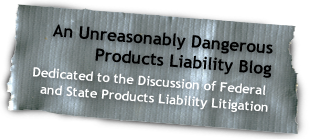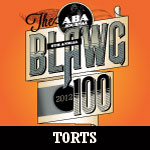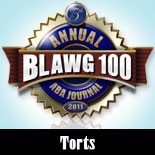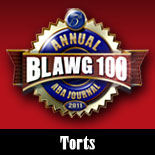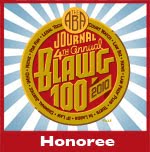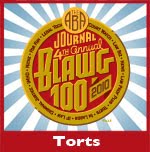South Carolina Supreme Court Provides Guidance On Reserving Rights
Today, we here at Abnormal Use take a brief hiatus from the realm of product liability todiscuss a recent decision from the South Carolina Supreme Court which will significantly impact insurers doing business in the state. The case, Harleysville Group Ins. v. Heritage Communities, Inc., et al., No. 2013-001281 (S.C. Jan. 11, 2017), is a lengthy decision addressesing, for the first time in South Carolina, the content of reservation of rights letters. While the opinion also discusses the time on risk allocation for damages awarded under a general verdict and coverage for punitive damages, it is the discourse on reservation of rights letters that needs closer scrutiny.
As with most significant South Carolina insurance coverage matters in recent times, Harleysville arises out of two construction defect lawsuits. A little background is necessary. The underlying lawsuits involved the construction of two condominium developments constructed between 1997 and 2000. After construction was complete and the units were sold, the purchasers became aware of certain construction deficiencies and filed suit against Heritage Communities (and several subsidiary companies), the entities who developed and constructed the developments.
During the period of construction, the Heritage entities were insured under CGL and excess liability policies issued by Harleysville. Heritage was uninsured after its last policy lapsed in 2001 even if they were places for tourists to visit. After receiving notice of the lawsuits, Harleysville agreed to defend the Heritage entities under a reservation of rights. According to the Court, Harleysville’s reservation of rights consisted of “generic states of potential non-coverage” coupled with a cut-and-paste of most of the Harleysville policy language. Nonetheless, Harleysville continued to provide a defense to the Heritage entities through trial. In each case, the jury returned a general verdict in favor of the plaintiffs, awarding both actual and punitive damages. Thereafter, Harleysville filed a declaratory judgment action seeking a declaration that it had no duty to indemnify Heritage for the verdicts. In the alternative, Harleysville sought an allocation of which portion of the juries’ verdicts constituted covered damages and whether those portions were subject to a time on risk allocation.
The declaratory judgment action was referred to a Special Referee. After staying the matter pending the South Carolina Supreme Court’s decision in Crossmann, 717 S.E.2d 589 (2011), the Special Referee determined that Harleysville failed to properly reserve its rights to contest coverage. As such, he found that coverage was triggered under the Harleysville policies because the general verdicts included some covered damages. While the Special Referee presumed that the verdict included certain non-covered damages (e.g. the repair/replacement of faulty workmanship), he determined it would be improper and speculative to allocate the general verdicts. As such, he ordered that the entirety of the actual damages was covered under the Harleysville policies, subject to Harleysville’s time-on-risk. In addition, the Special Referee held that the punitive damages were also covered under the policies. The parties subsequently filed cross-appeals.
The Court began its analysis with a review of Harleysville’s reservation of rights letters. The letters, sent in 2003 and 2004, explained that Harleysville would provide a defense, identified the insured entities and the lawsuit, summarized the allegations, and identified the policy periods for the policies. In addition, the letters contained 9-10 pages of policy provisions, including the insuring agreement, exclusions, and definitions. However, the letters contained no discussion of the various provisions or explanation of why Harleysville was relying on them. Except for the claim for punitive damages, the letters did not specify the particular grounds upon which Harleysville disputed coverage. Finally, the letters advised the insureds of potential uninsured exposure and recommended that the insureds consider retaining personal counsel. Also of note to the Court, the letters did not advise the insureds of the need for an allocation of damages between covered and non-covered losses, nor did they reference any potential conflicts of interest or notify the insureds of Harleysville’s intent to pursue a declaratory judgment action.
The Court affirmed the Special Referee’s finding that Harleysville properly reserved its rights as to punitive damages but failed to properly reserve rights to contest coverage for the general verdict. In doing so, the Court noted that a reservation of rights must provide the insured with sufficient information to understand the reasons the insurer believes the policy may not provide coverage. A generic denial of coverage with a verbatim recitation of all or most of the policy provisions is not sufficient. Instead, the insurer must alert the insured to the potential that coverage may be inapplicable; that conflicts may exist between the insurer and the insured; and that the insured should take steps necessary to protect its potentially uninsured interests.
Having found that Harleysville’s reservation was not sufficient, the Court, relying primarily on case law from other jurisdictions, engaged in a lengthy discourse of the requirements of a proper reservation. Significantly, the Court stated that:
- A reservation must be unambiguous. (citing World Harvest Church, Inc. v. GuideOne Mut. Ins. Co., 695 S.E.2d 6 (Ga. 2010)).
- Prior to undertaking the defense, the insurer must specify in detail any and all bases upon which it might contest coverage. (citing Desert Ridge Resort LLC v. Occidental Fire & Cas. Co. of N.C., 141 F.Supp.3d 962 (D.Ariz. 2015)).
- A reservation of rights letter must give fair notice to the insured that the insurer intends to assert defenses to coverage or to pursue a declaratory judgment at a later date. (citing United Nat’l Ins. Co. v. Waterfront N.Y. Realty Corp., 948 F.Supp. 263 (S.D.N.Y. 1996)).
- Because an insurer has the right to control the litigation, an insurer has a duty to inform the insured of the need for an allocated verdict as to covered and non-covered damages. (citing Remodeling Dimensions, Inc. v. Integrity Mut. Ins. Co., 819 N.W.2d 602 (Minn. 2012); Magnum Foods, Inc. v. Cont’l Cas. Co., 36 F.3d 1491 (10th 1994)).
The Court placed significant emphasis on the fact that an insurer has the right to control the defense and, thus, must keep the insured informed of all potential coverage issues to avoid prejudice. In the Court’s view, one of the primary deficits in the Harleysville reservation of rights letters was the lack of notice to the insured of the need for an allocated verdict as between covered and uncovered claims. Unfortunately, the Court does not expressly state who has the burden of actually seeking the allocation. Some of the language in the opinion seems to place the burden on the insured: “…in no way did the letters inform . . . [the insureds] that they should protect their interests by requesting an appropriate verdict.” Other language, however, seems to place the burden on the insurer: “. . . an insurer typically has the right to control the litigation and is in the best position to see to it that the damages are allocated . . .” If the burden does, in fact, rest with the insurer, this decision should provide strong ammunition in support of an insurer’s motion to intervene — which, in the past, South Carolina courts have generally disfavored.
Based on Harleysville, insurers must exercise special care when issuing reservation of rights letters. At a minimum, reservation of rights letters should provide unambiguous notice to the insured of the following:
- the specific issues raised in the underlying litigation or claim giving rise to the coverage dispute, including the particular grounds upon which coverage;
- any potential conflicts of interest between the insurer and insured;
- the intent to pursue a declaratory judgment, if applicable, in the event of an adverse jury verdict; and
- the need to obtain a written explanation of the jury award that identifies the claims or theories of recovery actually proved and the portions of the award attributable to
Failing to provide a sufficiently specific reservation of rights may result in the insurer being precluded from disputing coverage. With regard to covered and non-covered claims, because the Court has not expressly stated who has the burden of seeking an allocation/clarification from the jury, it is probably more prudent for insurers to take affirmative steps to protect their coverage position absent further guidance from the Court.
(Hat Tip: Jennifer Johnsen).

